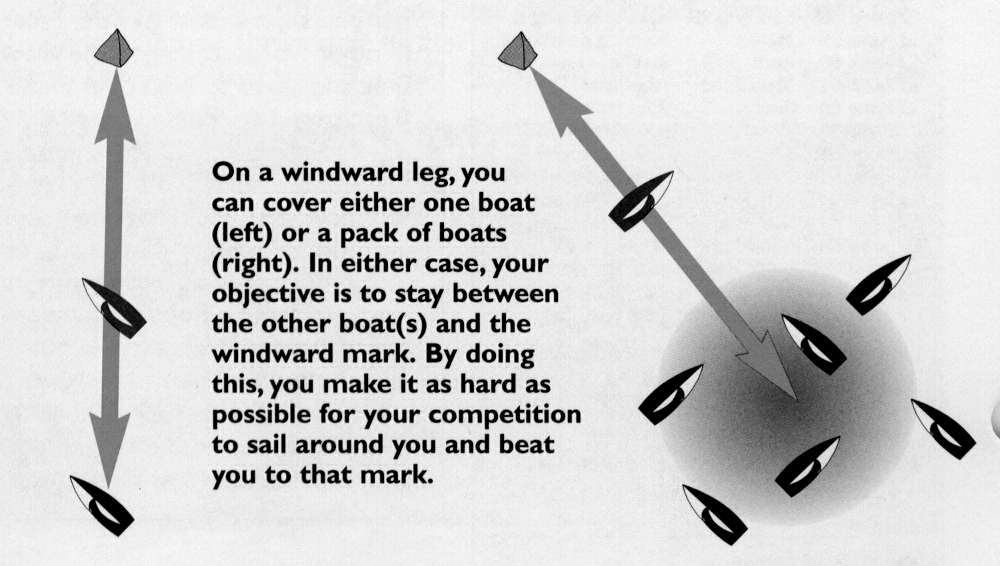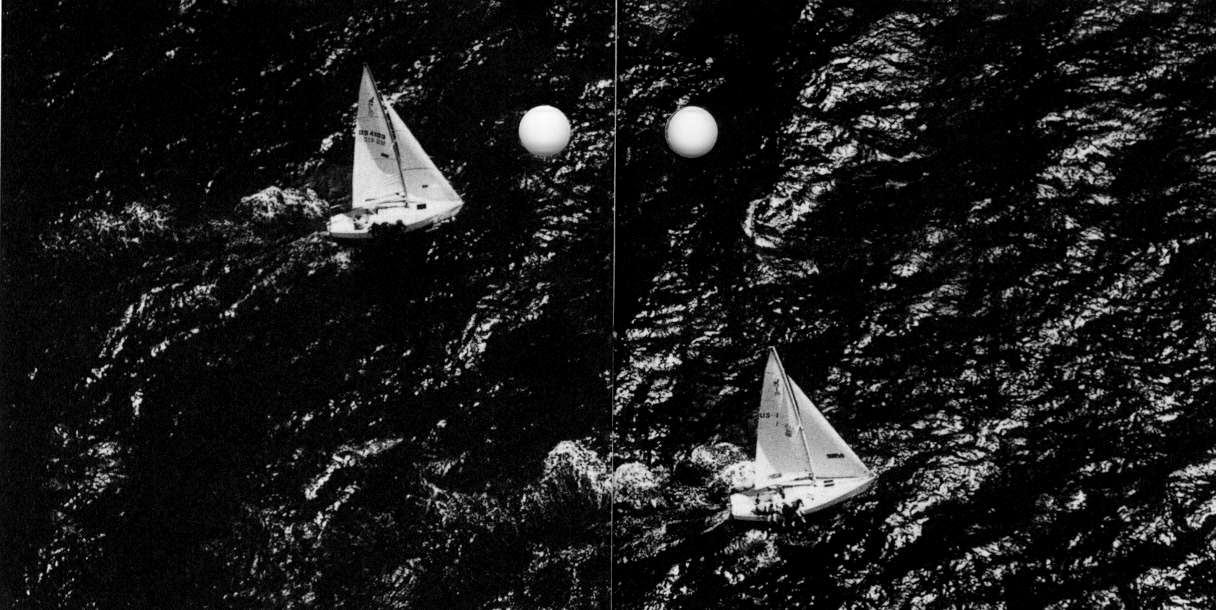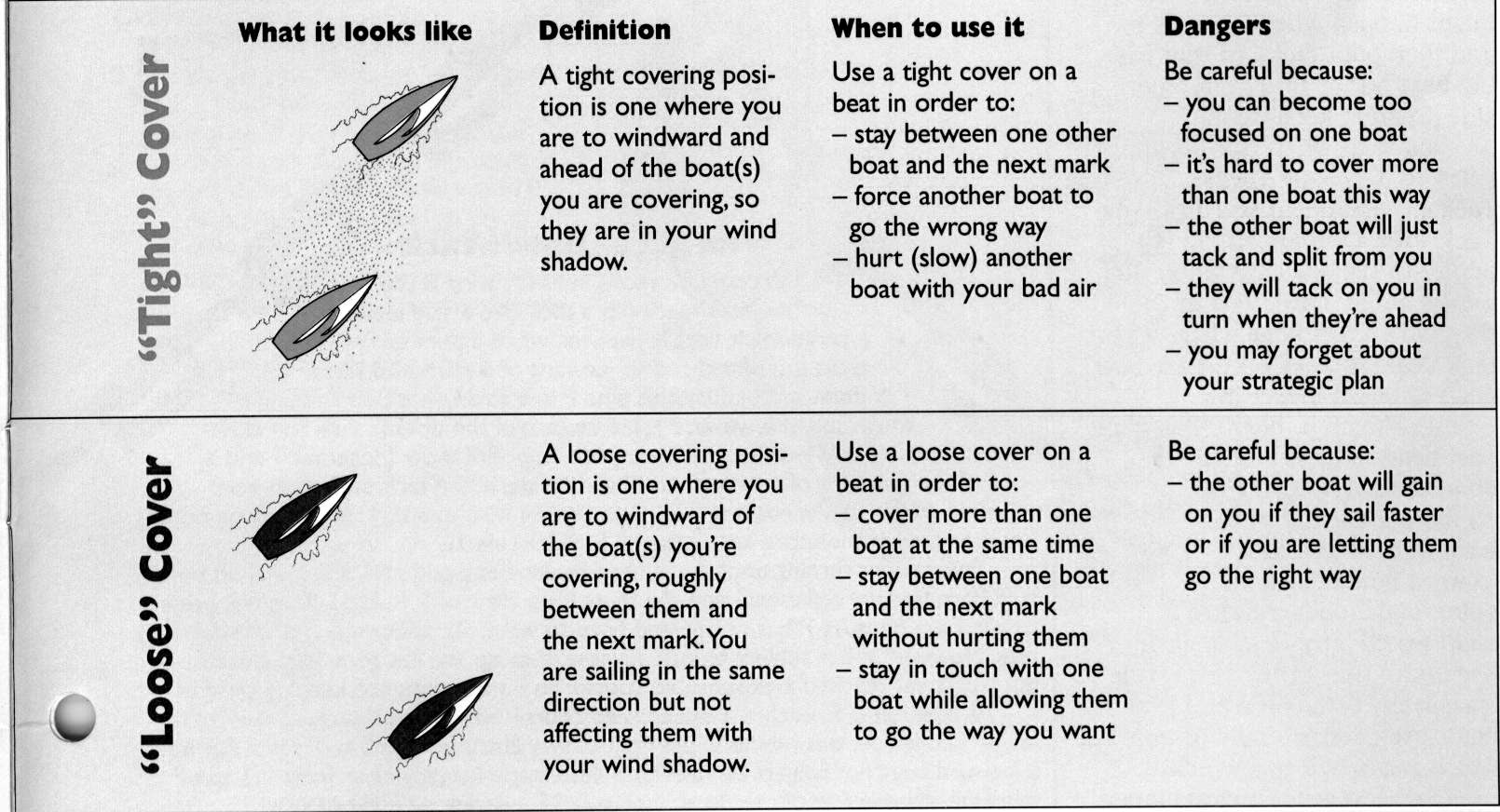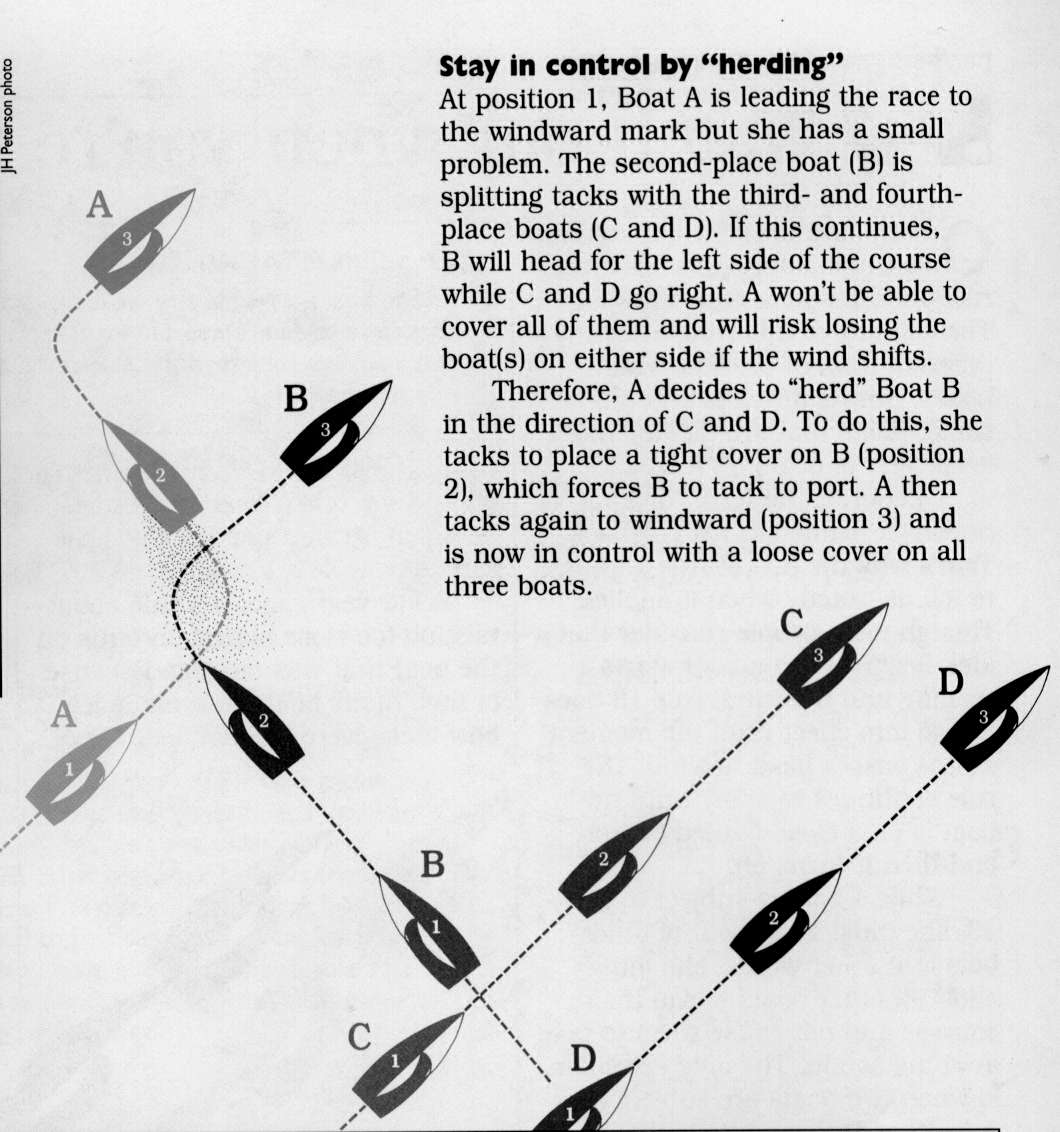
How to Cover Upwind
by David Dellenbaugh
Cover, cover, cover. Almost every sailor knows (and will let you know) that you should “cover” when you are ahead. Just ask Dennis Conner about the seventh race of the 1983 America’s Cup. Or talk to me regarding the last race of the 1995 Defender Trials.
Staying between your opponent and the next mark seems simple enough. But, in practice, it’s not always that easy. And even if you do it, you surely aren’t guaranteed success. Here is a closer look at the ins and outs of covering on a beat.
What is “covering”?
Covering is a defensive tactic (used primarily upwind) where you try to stay ahead of one or more boats that are behind you. When you “cover” a competitor, you position your boat between them and the next mark. The idea is to minimize the leverage, or separation, that other boats can get on you. In so doing, you minimize the chances that they will get past you.
 |
There are two basic covering techniques (see box at right). A “tight” cover is when you position yourself ahead and to windward of another boat. The idea is to keep a tight clamp on the other boat and also slow them with your bad air.
A “loose” cover is when you set up to windward of one or more boats without trying to hurt them with your wind shadow. Your goal is simply to stay in touch with the other boats and not let them sail into different wind than you have.
When you should cover
 |
| Here are two J/24s racing up a windy first beat. It looks like the windward boat (W) has put a “tight” cover on the leeward boat (L). However, I think L still has clear air because W is not quite far enough forward. W could fix this by footing off to bain bearing on L. However, W is not necessarily in a bad position. Often L will worry and reach off a bit to make sure she keeps her air clear. This would produce big gains for W. |
As I said above, covering is a defensive maneuver used to protect your position in the race. So if you aren’t fairly happy with how you’re doing, don’t even think about covering as a potential tactic.
Covering works best when the fleet is spread out a bit and you can focus on one or a few boats behind you. If you’re stuck in the middle of a large pack, you really need to concentrate on speed and strategy. That’s why tactics like covering are used more often on last beats than on first beats.
There are, however, certain situations when you might choose to cover no matter where you are in the race. These include:
• You have to beat one boat. If your only goat for the race or series is to finish ahead of one particular boat, you’d be foolish not to cover them when they’re behind you.
 |
• Most of the fleet behind you is going one way. Unless you are very confident about your strategy and willing to assume some rise, don’t split from the boats behind you, especially when it’s easy to put a loose cover on most of them.
• You’re not sure about the wind. When I feel like I know what the wind is doing, I may not cover at all. But when I don’t have a good handle on the wind, I spend a lot more time covering boats behind.
When you shouldn’t cover
Though many people portray covering as a “no-brainer” at almost any time, it doesn’t always work. Here are some potential pitfalls:
• You need to catch up. When you’re not happy with your position in the race, you should focus more on catching the boats ahead of your than beating the boats behind.
• You have shifty winds. One big danger is trying to cover a boat that is playing the shifts correctly. Since you are most likely in different wind (because you’re ahead of them), you will lose if you simply react to their moves. Sometimes the best option is simply to keep sailing your own race.
 |
• Your competitors are annoyed. Covering is a legitimate tactic in almost any race, but if you do it too much, or indiscriminately, you will be asking for others to do the same to you. This is why I almsot always prefer to loose cover. It produces nearly the same results as a tight cover with much less annoyance.
Whenever it’s possible, I don’t even tack on another boat going up the first beat. I try to give other boats a break and hope they’ll give me one in return.
Dave is a two-time America’s Cup veteran who publishes the newsletter Speed & Smarts. For a subscription call: 800-356-2200.